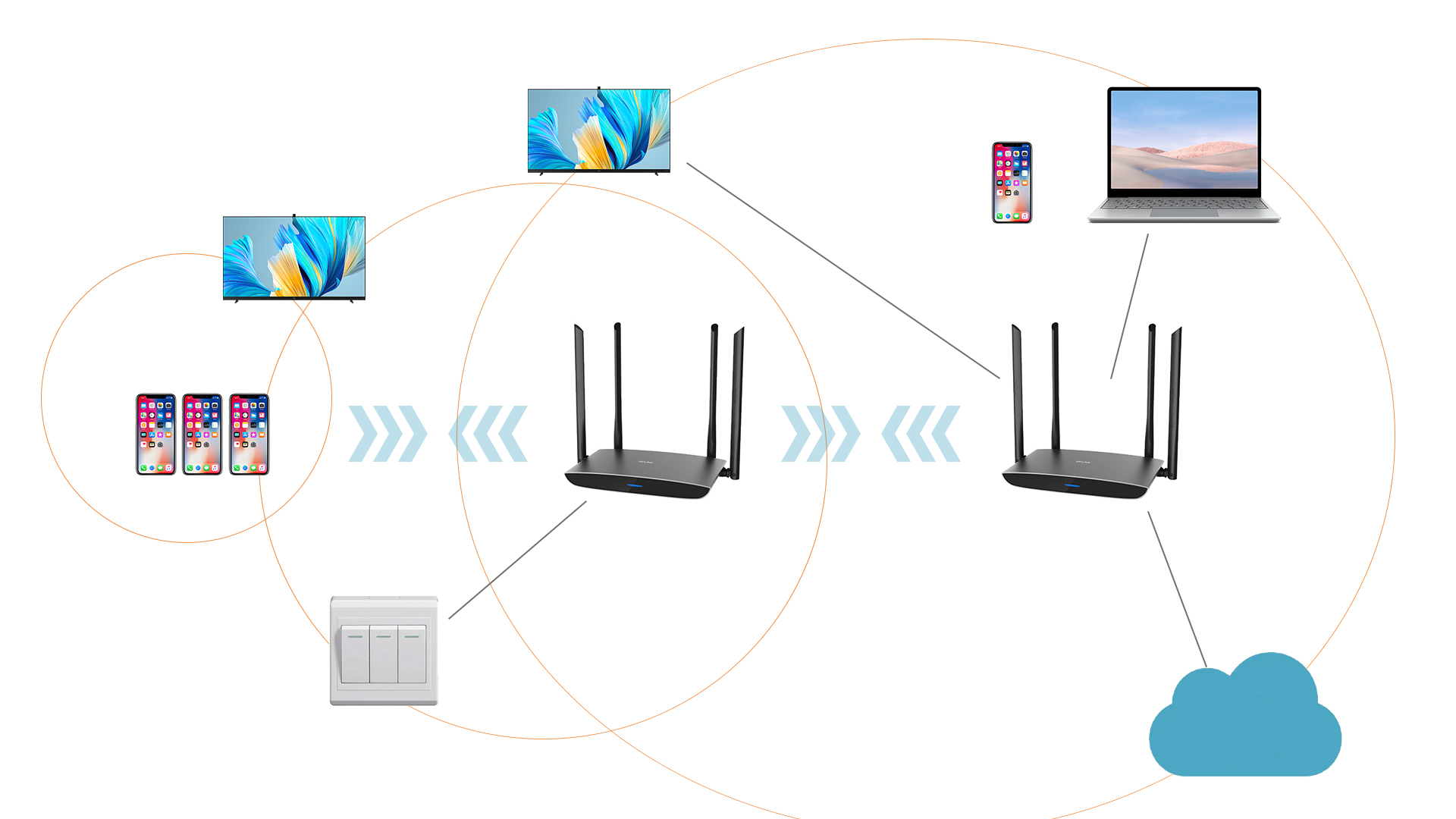In today's interconnected world, communication is the lifeblood of our technological landscape. We're surrounded by devices, machines, and systems that rely on seamless data exchange. At the heart of this communication web lies a fundamental component – the communication module. From our smartphones to smart homes, from industrial automation to cutting-edge healthcare, communication modules are the unsung heroes that enable devices to talk to each other. In this article, we embark on a journey to explore the intricate world of communication modules, shedding light on their importance, functionalities, and the boundless possibilities they unlock.
What is a Communication Module
A communication module is a hardware device that facilitates communication between different systems or devices. It can be wired or wireless and is used to exchange data and enable devices to work together. These modules come in various types, including wireless, wired, RF, IoT, Ethernet, CAN, and fiber optic modules, each designed for specific communication needs. They are crucial in industries like automotive, telecommunications, and IoT, enabling efficient data exchange and connectivity.

Communication module enables different devices to be connected
How the Communication Module works
A communication module facilitates data exchange between devices. It encodes digital data for transmission via various mediums like wireless signals or cables. At the receiving end, another module decodes the signal, checks for errors, and processes the data. Modules adhere to specific protocols, incorporate encryption for security, and manage power usage. They ensure data integrity, routing in networks, and can receive commands for remote control. These modules enable reliable and standardized data communication between devices.
Type of Communication Module
Communication modules come in various types, each designed for specific purposes and technologies. Here's an overview of some common types:
Wireless Communication Modules: These modules enable wireless data transfer and include Wi-Fi, Bluetooth, Zigbee, and LoRa modules. They are widely used in IoT devices and consumer electronics.
Wired Communication Modules: These modules facilitate wired data transfer through interfaces like Ethernet, USB, RS-232, or RS-485. They are commonly used in industrial automation and networking.
RF (Radio Frequency) Modules: RF modules operate in the radio frequency spectrum and are used for wireless communication in applications like remote controls, RF IDs, and wireless sensors.
IoT (Internet of Things) Communication Modules: These modules are designed specifically for IoT applications, providing low-power, long-range connectivity. Examples include NB-IoT and Cat-M1 modules.
CAN (Controller Area Network) Modules: CAN modules are prevalent in automotive and industrial applications for real-time data exchange between microcontrollers and sensors.
Fiber Optic Communication Modules: Fiber optic modules use light signals for high-speed data transmission and are commonly found in telecom networks and high-bandwidth data centers.
Satellite Communication Modules: These modules enable communication through satellites and are used in applications like GPS devices and satellite phones.
Cellular Communication Modules: Cellular modules, like 4G and 5G modules, provide mobile connectivity for devices, including those in the IoT and telematics sectors.
GPS (Global Positioning System) Modules: GPS modules receive signals from satellites to determine precise location coordinates and are used in navigation and tracking systems.
Power Line Communication (PLC) Modules: PLC modules use existing electrical wiring for data transfer, making them suitable for home automation and smart grid applications.
Short-Range Communication Modules: These include NFC (Near Field Communication) and RFID (Radio-Frequency Identification) modules, commonly used in contactless payments and access control.
Application of Communication Module
Communication modules are essential in various applications, serving as the backbone for data exchange and control in modern technology. Some common applications include:
IoT Devices
Communication modules are integral in Internet of Things (IoT) devices, allowing them to connect to the internet or other devices. This includes smart home devices like thermostats and lights.
Wireless Sensors
In industrial settings, wireless sensors equipped with communication modules can monitor environmental conditions, machinery, and equipment, sending real-time data for analysis and control.
Automotive Telematics
Communication modules enable connected car systems, providing features like GPS navigation, remote diagnostics, and emergency services.
Healthcare
In healthcare, these modules help in patient monitoring systems, transmitting vital signs and health data to healthcare providers, ensuring timely care.
Smart Grids
Communication modules are crucial in smart grid systems, enabling utilities to monitor and control electricity distribution, leading to efficient energy use.
Home Automation
They are the backbone of home automation systems, allowing users to control lighting, security, and appliances remotely.
Industrial Automation
In factories, communication modules play a pivotal role in industrial automation and control systems (IACS), facilitating machine-to-machine communication and control.
Summary
In closing, the evolution of communication modules has been nothing short of remarkable. From the early days of wired telegraphs to the wireless wonders of the present, these modules have transformed the way we live, work, and connect. As technology continues to advance, the role of communication modules will only become more central. They are the invisible threads that weave our digital world together, ensuring that information flows seamlessly, effortlessly, and instantly. Whether it's enabling your smart thermostat to adjust the temperature, your car to navigate through traffic, or your doctor to monitor your health remotely, communication modules are the enablers of a future limited only by our imagination. So, the next time you send a text, make a call, or use a smart gadget, take a moment to appreciate the silent work of the communication modules that make it all possible.

Nantian Electronics a professional distributor of electronic components, providing a wide range of electronic products, saving you a lot of time, effort and cost through our meticulous order preparation and fast delivery service.
Share this post



FAQ
1. Control module communication bus a off
The message "control module communication bus A off" in a vehicle typically indicates a problem with the communication system. This issue can be caused by various factors, including wiring problems, faulty modules, electrical issues, or software glitches. To resolve it, it's advisable to seek assistance from a qualified automotive technician who can diagnose the problem using diagnostic tools and apply the necessary fixes.
2. Lost communication with body control module
The error message "lost communication with body control module" in a vehicle suggests that there is a communication issue between the vehicle's diagnostic system and the body control module (BCM). The BCM is responsible for various functions related to the vehicle's electrical systems and body functions.
This problem could be due to a variety of causes, including a faulty BCM, wiring problems, a blown fuse, or issues with the diagnostic equipment itself.
3. U0131 lost communication with power steering control module
The message "U0131 lost communication with power steering control module" indicates a communication problem between the vehicle's diagnostic system and the power steering control module. The power steering control module plays a crucial role in controlling and assisting the vehicle's power steering system.
4. What causes lost communication with transmission control module?
The "lost communication with transmission control module" error points to a breakdown in communication between the vehicle's diagnostic system and the transmission control module (TCM). Potential causes include faulty wiring, damaged connections, blown fuses, electrical interference, software issues, problematic diagnostic equipment, low battery voltage, and problems with the Controller Area Network (CAN) bus.
5. What causes lost communication with transmission control module?
The "lost communication with transmission control module" error points to a breakdown in communication between the vehicle's diagnostic system and the transmission control module (TCM). Potential causes include faulty wiring, damaged connections, blown fuses, electrical interference, software issues, problematic diagnostic equipment, low battery voltage, and problems with the Controller Area Network (CAN) bus.
6. What causes lost communication with body control module?
"Lost communication with the body control module" is a diagnostic code signaling a breakdown in communication between a vehicle's computer system and its body control module (BCM). Common culprits include damaged wiring or connectors, BCM failures, blown fuses, software or firmware issues, problems with diagnostic equipment, electrical interference, battery voltage fluctuations, and issues related to the Controller Area Network (CAN) bus, which many modern vehicles use for internal communication.